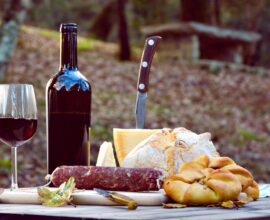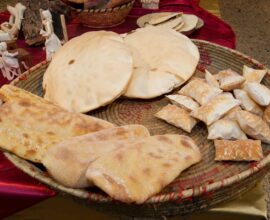Sardinian honey: secrets and properties of a superfood
Sardinian honey is an excellence of the island’s gastronomy and goes perfectly with the flavors of tradition
Sardinian honey is a symbol of past and present island culture
The territory of Sardinia is covered by a wide variety of plant species. The resulting honey shows this variety. Wildflower honey is exceptional, as is that of lavender, strawberry tree or asphodel, just to name a few.
For millennia Sardinian honey was the only known sweetener on the island. However, this product, the result of the industrious work of bees and extracted by skilled beekeepers, is much more. In fact, it is a food rich in properties and a natural medicine. For example, the Sumerians used it to treat wounds, gastritis, coughs and eye diseases. Today, honey is one of the most suitable natural antibacterials and anti-inflammatories for relieving winter diseases.
Let’s find out more about the various types of Sardinian honey and their possible uses in the kitchen.
Characteristics and properties of Sardinian honey
Sardinian wildflower honey is produced from the flowers of the most common plants in Sardinia, such as heather, asphodel, thistle and rosemary. Therefore, it is the typical honey of the Mediterranean scrub, different from that of other regions due to the unique mix of flowers. The taste varies based on which flower is most present. For example, if bees collect more nectar from thistles it will be more spicy, if there is more lavender it will be sweeter.
Among its properties, Sardinian wildflower honey stimulates the intestine and digestive system, and is antibacterial. Absolutely to try with yogurt.
Lavender honey recalls the scent and taste of the flowers it comes from. It has an amber color and crystallizes faster than other varieties. Its benefits are those of the plant: it relaxes the nervous system, soothes headaches, is an anti-inflammatory for the respiratory system and calms coughs. In addition, it soothes itching from insect bites.
As a food, it is excellent with semi-aged cow cheeses (such as Nobile) or with Sardinian Peretta, a pear-shaped cow cheese, also known as Sardinian provola, with a sweet and delicate flavor.
Another particularly popular Sardinian honey is strawberry tree honey, with its bitter taste and dark color.
This honey is rare and prized, and has a high level of antioxidants. It is able to improve the levels of serum ferritin, a protein that guarantees the body’s iron reserves. In is beneficial for the immune system. In the kitchen, it goes well with aged cheeses, such as Fiore Sardo or Caprino Visconte.
Thistle honey is another excellent Sardinian honey, especially famous for its captivating and floral flavor. But also for its properties. It is rich in vitamins and minerals and beneficial for the cardiovascular and digestive systems. We recommend trying it on a slice of bread, to enjoy it at its best.
Among the Sardinian excellences there is also eucalyptus honey. Eucalyptus honey has an amber color and a strong flavor, with notes of licorice. It is famous for its balsamic properties and is indicated for the treatment of colds and flu states. Moreover, it has a strong antibacterial action. It is excellent for breakfast, perhaps spread on a toast and with a hot drink.
Finally, another very popular Sardinian honey is that of citrus fruits. This honey is very fragrant and has a slightly sour taste. It stimulates the appetite and purifies the body, especially if consumed before main meals. It is an excellent sweetener in herbal teas and over fried sweets.
Cooking with honey
Local honey is a main ingredient of the the Sardinian cuisines. Some examples are the delicious seadas, the Arenzada or the typical carnival sweets. But honey is not only used for desserts: it is also great in savory recipes, such as lacquered duck breast or paired with cheeses.
Forte Village is the award-winning resort surrounded by the splendid Sardinian sea. Here, traditional ingredients, such as honey, mix with the most interesting trends in international cuisine. Together, they are the heart of a gastronomic journey that tells local authenticity through tastes and flavors. Guests can choose from a range of gourmet and starred restaurants, such as the Terrazza San Domenico by starred chef Massimiliano Mascia, the Forte Gourmet, and the Belvedere. To live a true sensory experience with every bite.
Do you want to discover the authentic flavors of Sardinian cuisine and live a dream vacation in a true paradise? Discover the Forte Village Resort in Sardinia






